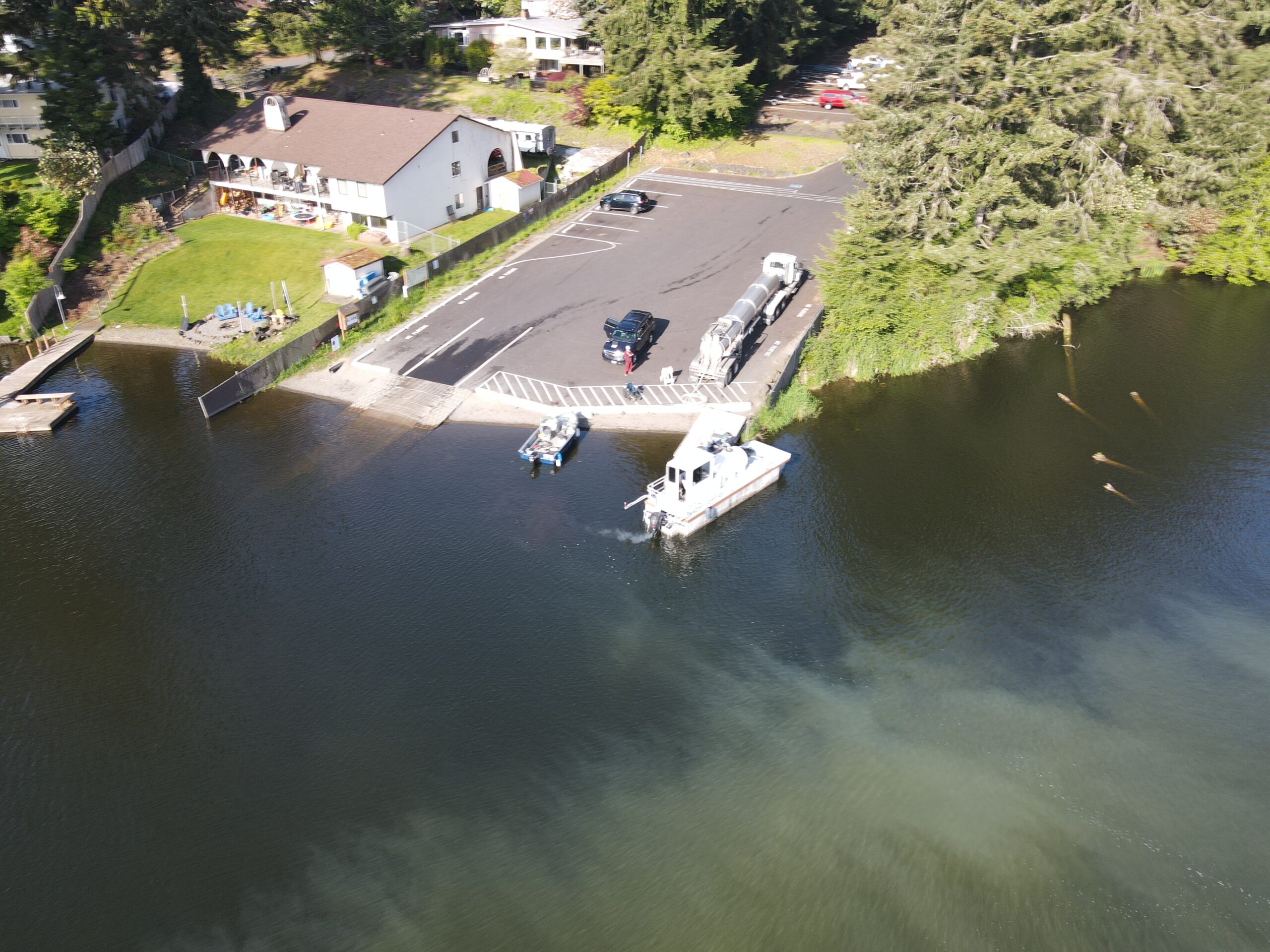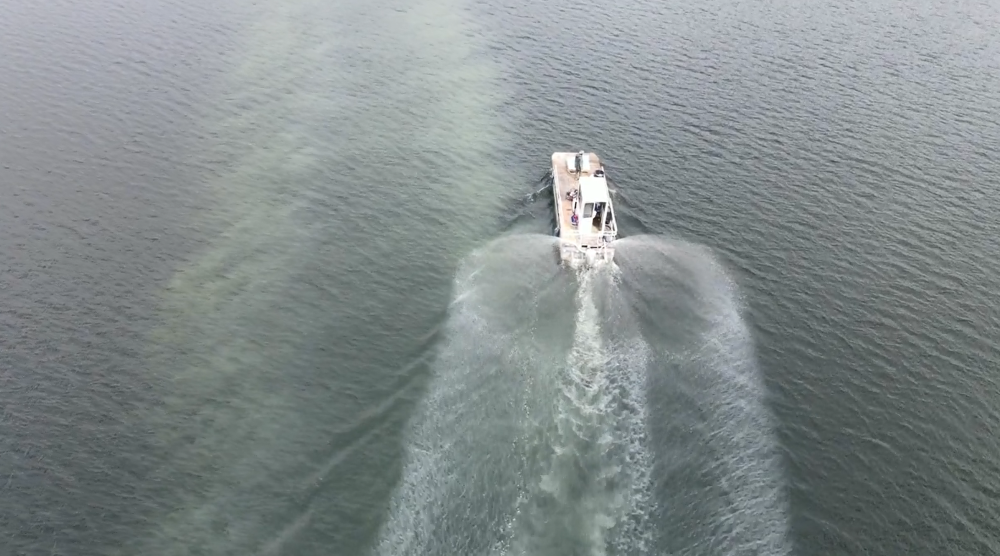Today started the first phase of the Long Lake Adaptive Management Program to help correct years of toxic algae blooms. The lake is a 330 acre water body in Thurston County Washington. It has experienced closures for toxic algae blooms over the year including recent summer seasons. They were looking for a solution that would help mitigate the problems that cyanobacteria cause including lake closure.

Phosphorus is a key driver of cyanobacteria blooms. When levels are high, these species have a competitive advantage over beneficial algae species because they can fix nitrogen from the atmosphere. Removing phosphorus as a source in the water column limits the carrying capacity of the lake to produce these blooms.
There has been a school of thought over the years that expensive studies are necessary to come up with plans to fix these problems. These generally result in costs that would often go a long way toward actually mitigating the problem. After the study is performed, work proceeds to implement the recommendation of the studies and these often claim they will last for years.
Recent examples are aluminum sulfate treatments designed to “reset” the lake and cap lake sediments, a primary source of phosphorus loading in many lake systems. These are also generally expensive ventures and while they are “designed” to correct problems for decades, they generally last well short of the lifespan assumed in the study.
Adaptive management is a concept that can be implemented at a much lower cost. Initial data collection and stakeholder input is reviewed. If there are data gaps, then those are identified and additional sampling occurs. With that information, a prescription is developed to alleviate the problem, the prescription is implemented and follow-on monitoring tracks results. As results are known, additional follow-on work can be suggested and implemented.
The Long Lake prescription was designed to utilize two different phosphorus sequestering technologies. The first application is happening this week.
Our biologists are using Aluminum Sulfate to target and sequester the phosphorus available in the lake water column. This will remove much of the P load that would fuel algae growth in the early and mid-summer months. A video of the alum floc forming behind the application vessel can be viewed here: https://youtu.be/FFMACktYu4M
A second application will be made this coming week with Phoslock. Phoslock is a phosphorus sequestering technology that was developed by the Australia Government to combat Harmful Algae Blooms (HAB) and reduce the threat of waterborne toxins to pets, wildlife and human health. This technology is different that aluminum sulfate. The Phoslock captures free reactive phosphorus present in the water column and converts it to a mineral that will remain inert. Phoslock also caps the lake sediments effectively.
In this case the Phoslock application will target the lake sediments below the thermocline where during the summer months anoxic conditions can lead to sediment phosphorus release.
Ongoing monitoring will adjust the program as necessary over the coming years.
The result of this program is forecast to be significantly less than many similar projects in the Pacific Northwest.



